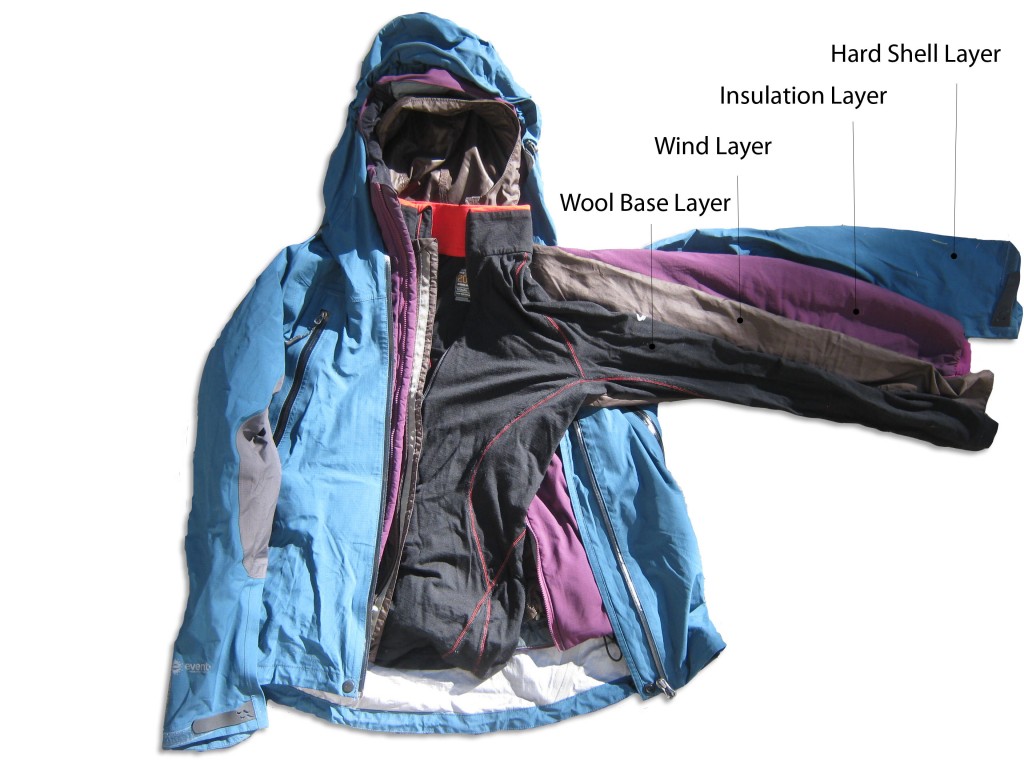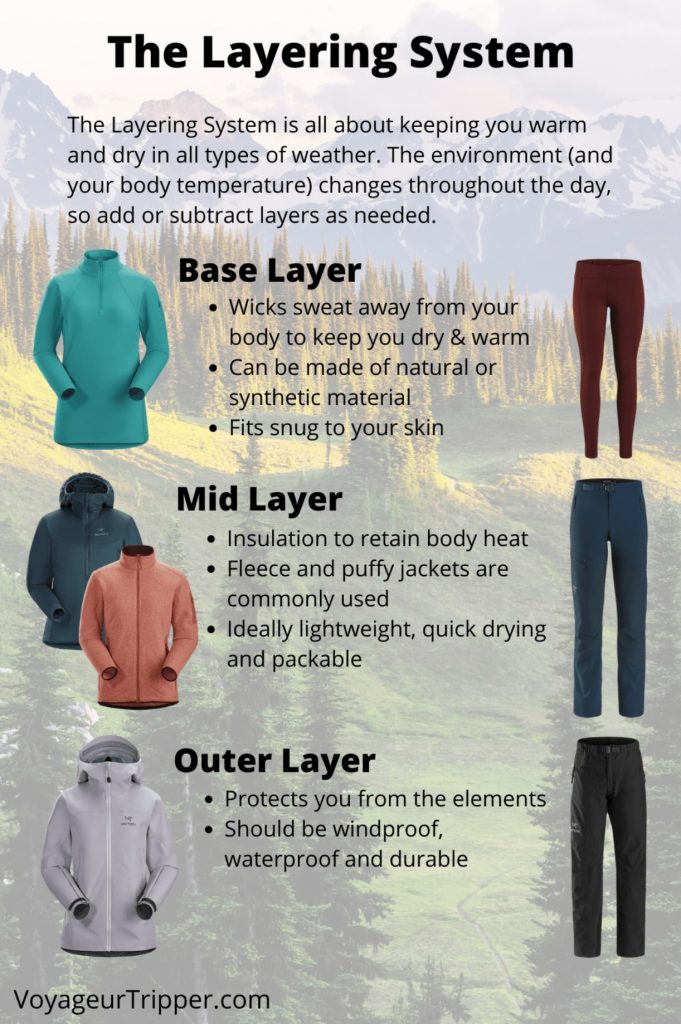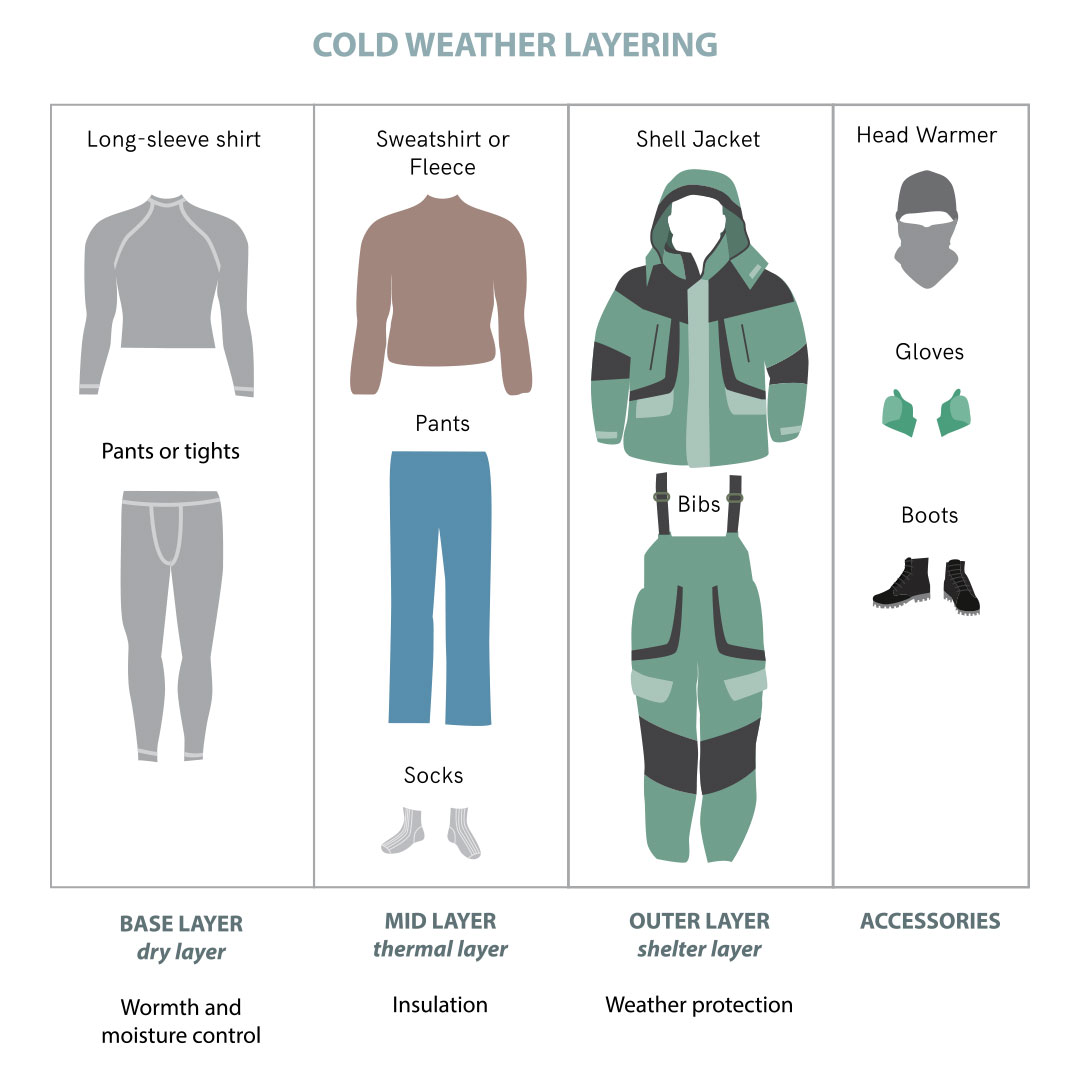Ultimate Guide to Survival Clothes: Expert-Tested Gear for Any Emergency
Understanding Survival Clothes Fundamentals

The concept of survival clothes extends far beyond simply wearing your favorite outdoor jacket. During my years of backcountry adventures and emergency preparedness training, I've discovered that effective survival clothing operates on scientific principles that most people overlook. The primary functions of survival clothing include thermal regulation, moisture management, protection from environmental hazards, and durability under extreme stress.
What separates survival clothing from regular outdoor gear is its ability to perform multiple critical functions simultaneously. When I was caught in an unexpected blizzard during a winter hiking expedition in the Cascades, I learned firsthand that survival clothes must maintain their protective properties even when wet, torn, or subjected to extreme temperature fluctuations.
Key characteristics that define true survival clothing include multi-functionality, repairability in field conditions, resistance to abrasion and tearing, quick-drying capabilities, and the ability to maintain insulation properties when compressed or damp. These clothes should also be designed for extended wear without causing chafing or discomfort, as survival situations often require wearing the same garments for days or weeks.
The psychology of survival clothing is equally important. When you're properly dressed for harsh conditions, your confidence increases and stress levels decrease, allowing for better decision-making in critical situations. I've noticed that quality outdoor hiking clothes not only protect your body but also provide mental reassurance that can be crucial for survival morale.
The Three-Layer System Explained

The three-layer system forms the backbone of effective survival clothing strategy, and mastering this concept has saved my life on multiple occasions. The base layer, insulation layer, and shell layer each serve distinct but complementary functions that work together to create a personal microclimate around your body, regardless of external conditions.
The base layer, which I consider the most critical component, manages moisture and provides the foundation for temperature regulation. During a particularly challenging survival exercise in Alaska, I learned that a poor base layer choice can undermine the entire system. Quality base layers should wick moisture away from skin, dry quickly, and maintain their properties even after extended wear. Merino wool and high-tech synthetic fabrics excel in this role, while cotton should be absolutely avoided as it retains moisture and loses insulation when wet.
Insulation Layer Mastery
The insulation layer traps warm air and provides the bulk of your thermal protection. My preferred approach involves using multiple thin insulation layers rather than one thick piece, as this allows for fine-tuning based on activity level and conditions. Down insulation offers the best warmth-to-weight ratio but loses effectiveness when wet, while synthetic insulation maintains thermal properties in damp conditions but weighs more and compresses less efficiently.
The outer shell layer protects against wind, rain, and abrasion while allowing moisture vapor to escape from inner layers. I've tested numerous shell fabrics, and the best survival shells combine waterproof protection with breathability. During extended wear, even the most breathable shells will experience some internal condensation, so understanding how to manage this moisture through venting and layer adjustment becomes crucial for maintaining the system's effectiveness.
Essential Materials and Fabrics
After years of field testing various materials in extreme conditions, I've developed strong preferences based on real-world performance rather than marketing claims. Merino wool stands out as the ultimate survival fabric due to its natural odor resistance, thermal regulation properties, and ability to maintain warmth even when damp. During a week-long survival course where we couldn't change clothes, my merino wool base layers remained comfortable and functional throughout.
Synthetic fabrics like polypropylene and polyester excel in specific applications, particularly when weight and quick-drying capabilities are priorities. Modern synthetic insulations have reached impressive performance levels, with materials like PrimaLoft and Climashield offering excellent warmth-to-weight ratios while maintaining insulation properties when compressed or damp. For lightweight hiking clothes, synthetic materials often provide the best balance of performance and practicality.
Natural vs Synthetic Considerations
The debate between natural and synthetic materials becomes more nuanced in survival contexts. While synthetic materials offer predictable performance and easier care, natural materials like wool and down provide superior comfort and performance characteristics that become increasingly important during extended wear. I typically recommend a hybrid approach, using synthetic materials for base layers and shells while incorporating natural materials for insulation and comfort layers.
Pro Tip: I always carry fabric repair tape and basic sewing supplies as part of my survival kit. Even the best materials can fail, and field repair capabilities can extend the life of your survival clothes significantly.
Fabric treatments and finishes play crucial roles in survival clothing performance. Durable water repellent (DWR) treatments, antimicrobial finishes, and UV protection coatings can significantly enhance fabric performance. However, these treatments wear off over time and require maintenance to remain effective. Understanding how to refresh these treatments in the field or at home becomes an important skill for maintaining your survival clothing system.
Seasonal Survival Clothing Strategies

Seasonal adaptation of survival clothes requires understanding how environmental conditions affect fabric performance and body thermal regulation. My approach to seasonal clothing strategy has evolved through extensive testing in environments ranging from desert heat to arctic cold, and each season presents unique challenges that demand specific solutions.
Summer survival clothing focuses on sun protection, ventilation, and moisture management while maintaining enough coverage to protect against insects and abrasion. Lightweight, long-sleeved shirts with UV protection become essential, and I've learned to prioritize breathable fabrics over minimal clothing. During desert survival training, I discovered that proper summer hiking clothes can reduce water requirements significantly by minimizing evaporative cooling losses.
Winter Survival Clothing Excellence
Winter presents the most demanding conditions for survival clothing, where mistakes can quickly become life-threatening. My winter clothing strategy emphasizes redundancy and modularity, allowing for rapid adaptation to changing conditions and activity levels. The key insight I've gained is that staying slightly cool during high-activity periods prevents the dangerous cycle of overheating, sweating, and subsequent cooling that can lead to hypothermia.
Spring and fall represent transition seasons where weather can change rapidly and dramatically. My strategy for these seasons involves carrying more clothing options rather than relying on a single system. Packable insulation layers, lightweight rain gear, and extra base layers become crucial components. I've learned to always prepare for the worst possible weather conditions predicted for the entire duration of any outdoor activity, plus a margin for unexpected changes.
Shop Premium Merino Wool Survival JacketsMy Experience Testing Survival Clothes
Over the past fifteen years, I've had the privilege of testing survival clothes in some of the world's most challenging environments, from the windswept peaks of Denali to the humid jungles of Costa Rica. Each expedition has taught me valuable lessons about what works and what fails when conditions become serious. The most important lesson I've learned is that expensive doesn't always mean better, and the best survival clothes are often those that perform consistently across a wide range of conditions.
During a particularly memorable survival challenge in the Canadian Rockies, my carefully planned clothing system was put to the ultimate test when an unexpected late-season storm brought three feet of snow and temperatures dropping to -20°F. My layering system, built around quality merino wool hiking clothes and synthetic insulation, kept me warm and dry for four days until rescue arrived. This experience reinforced my belief in the importance of redundant systems and quality base layers.
Real-World Performance Insights
One of my most enlightening experiences occurred during a desert survival course where I learned that thermal regulation is just as critical in hot climates as cold ones. The lightweight, long-sleeved shirts and pants I initially thought were unnecessary became lifesavers when they protected me from sun exposure and helped regulate my body temperature during extreme heat. This experience fundamentally changed my approach to survival clothing for all environments.
User Review Summary - Tactical Survival Pants
"After 6 months of daily wear during outdoor work, these tactical pants show minimal wear and have survived several emergency situations. The reinforced knees and multiple pockets have proven invaluable." - Michael R., Search and Rescue Volunteer
Testing clothing during actual emergencies has provided insights that no controlled environment can replicate. During a wilderness medical emergency where I had to spend an unexpected night outdoors while waiting for help, I learned the importance of having emergency clothing that doesn't require complex layering decisions. Simple, effective systems that work even when you're exhausted, injured, or stressed become far more valuable than complex systems that require careful management.
Top Survival Clothing Recommendations
Based on extensive field testing and real-world performance, I've compiled my definitive recommendations for survival clothing that delivers when it matters most. These recommendations prioritize functionality, durability, and versatility over brand names or marketing claims. Each item has proven itself in challenging conditions and represents the best value in its category.
For base layers, I consistently recommend merino wool options for their natural properties and synthetic alternatives for specific applications. My top choices include products that have demonstrated exceptional durability and performance across multiple seasons and conditions. For those seeking best hiking clothes for men and women, the key is finding pieces that excel in multiple scenarios rather than specialized single-use items.
Essential Survival Clothing Pieces
Tactical Survival Pants
Water-resistant, multi-pocket design with reinforced construction for extreme durability.
View on AmazonMerino Wool Expedition Jacket
100% merino wool construction provides natural temperature regulation and odor resistance.
View on AmazonFor those building comprehensive survival wardrobes, I recommend focusing on versatile pieces that serve multiple functions rather than highly specialized items. Quality best hiking clothes for women and men should prioritize fit, functionality, and durability over fashion considerations. The goal is building a complete system where each piece works well with others to create maximum protection and comfort.
User Review Summary - Wool Anorak
"This wool anorak has been my go-to outer layer for three years of backcountry adventures. The virgin wool construction with reinforced shoulders has held up to everything from bushwhacking to rock scrambling." - Sarah K., Wilderness Guide
Conclusion
The world of survival clothes represents far more than simple outdoor apparel – it's a critical life-support system that can determine your fate in emergency situations. Through years of testing, research, and real-world application, I've learned that the best survival clothing systems combine scientific understanding with practical experience to create solutions that protect, comfort, and enable survival in the world's most challenging environments.
The key principles that should guide every survival clothing decision include prioritizing layering systems over single-piece solutions, choosing materials based on performance rather than marketing claims, and understanding that the best gear is that which you know how to use effectively. Whether you're planning for emergency preparedness or embarking on wilderness adventures, your clothing choices will directly impact your safety, comfort, and chances of success.
Remember that survival clothing is an investment in your safety and well-being. Quality pieces that perform reliably across multiple scenarios and seasons will serve you far better than cheaper alternatives that might fail when you need them most. The intersection of camping clothes for women and men with true survival capability represents the future of outdoor apparel, where every piece serves multiple functions and excels under pressure.
User Review Summary - Combat Jacket Set
"Used this tactical combat set during a 10-day survival exercise. The ripstop construction held up to everything we threw at it, and the modular design allowed for perfect climate control." - James T., Military Instructor
As you build your survival clothing system, remember that knowledge and experience are just as important as the gear itself. Practice using your clothing in various conditions, learn how to maintain and repair it in the field, and continuously refine your system based on actual performance rather than theoretical ideals. The best survival clothes are those that work seamlessly with your skills and knowledge to keep you safe, comfortable, and capable in any situation nature presents.
Complete Your Tactical Survival SetFrequently Asked Questions
What makes survival clothes different from regular outdoor clothing?
Survival clothes are specifically designed to maintain critical protective functions under extreme stress and extended wear. Unlike regular outdoor clothing, they prioritize durability, multi-functionality, and field repairability. They must perform when wet, torn, or subjected to conditions far beyond normal use. Key differences include reinforced construction at stress points, materials that maintain insulation when compressed or damp, and designs that allow for extended wear without causing discomfort or chafing. Additionally, survival clothes often incorporate multiple functions into single pieces, such as pockets designed for emergency supplies or fabrics that provide both insulation and weather protection.
How do I choose the right layering system for survival situations?
The ideal layering system depends on your environment, activity level, and personal physiology. Start with a moisture-wicking base layer that fits snugly without restricting movement. Add insulation layers that can be easily adjusted – thin layers work better than single thick pieces for temperature regulation. Your outer shell should protect against wind and precipitation while allowing moisture vapor to escape. Consider your typical activity patterns: high-output activities require more breathable systems, while sedentary periods demand more insulation. Test your system in controlled conditions before relying on it in survival situations, and always carry backup layers for critical components like base layers and insulation.
What materials should I avoid in survival clothing?
Cotton is the primary material to avoid in survival clothing, as it retains moisture, loses insulation properties when wet, and takes excessive time to dry. Avoid clothing with complex care requirements that can't be maintained in field conditions. Stay away from materials that are easily damaged by common survival activities like fire building or bushwhacking. Fabrics with poor tear resistance or those that continue to tear once punctured should be avoided. Additionally, be cautious of heavily treated fabrics that might lose their protective properties when exposed to heat, UV radiation, or repeated washing. Materials that off-gas toxic fumes when heated should never be used near fire sources. Finally, avoid any fabric that causes skin irritation during extended wear, as survival situations often require wearing the same clothes for extended periods.
How do I maintain survival clothes in the field?
Field maintenance of survival clothes requires planning and the right supplies. Carry basic repair materials including fabric tape, needle and thread, and replacement buttons or fasteners. Learn basic repair techniques before you need them – practice mending tears, reinforcing worn areas, and replacing broken components. Keep clothes as clean as possible by spot-cleaning with minimal water and soap. Air dry whenever possible to prevent odor buildup and fabric degradation. Rotate layers regularly to allow each piece to dry and air out. Check for wear patterns and address small problems before they become major failures. Re-apply DWR treatments when you notice reduced water repellency. Store clothes properly when not in use to prevent compression damage to insulation. Most importantly, inspect your gear regularly and replace worn items before they fail in critical situations.
What's the biggest mistake people make with survival clothing?
The biggest mistake is choosing survival clothes based on single-scenario thinking rather than versatility across multiple conditions. Many people select gear for the most extreme conditions they might face, resulting in systems that are overkill for normal use and therefore never properly tested or understood. Another critical error is failing to practice with their clothing systems in realistic conditions before depending on them. People often focus too heavily on expensive, high-tech solutions while neglecting basic principles like proper fit, layering techniques, and maintenance skills. Additionally, many survivalists choose clothes that look tactical or "survival-ready" without considering whether they're appropriate for their actual environment and likely scenarios. Finally, failing to consider the psychological aspects of survival clothing – comfort, confidence, and morale – can be just as dangerous as choosing inadequate technical specifications. The best survival clothing is that which you understand completely and can use effectively under stress.